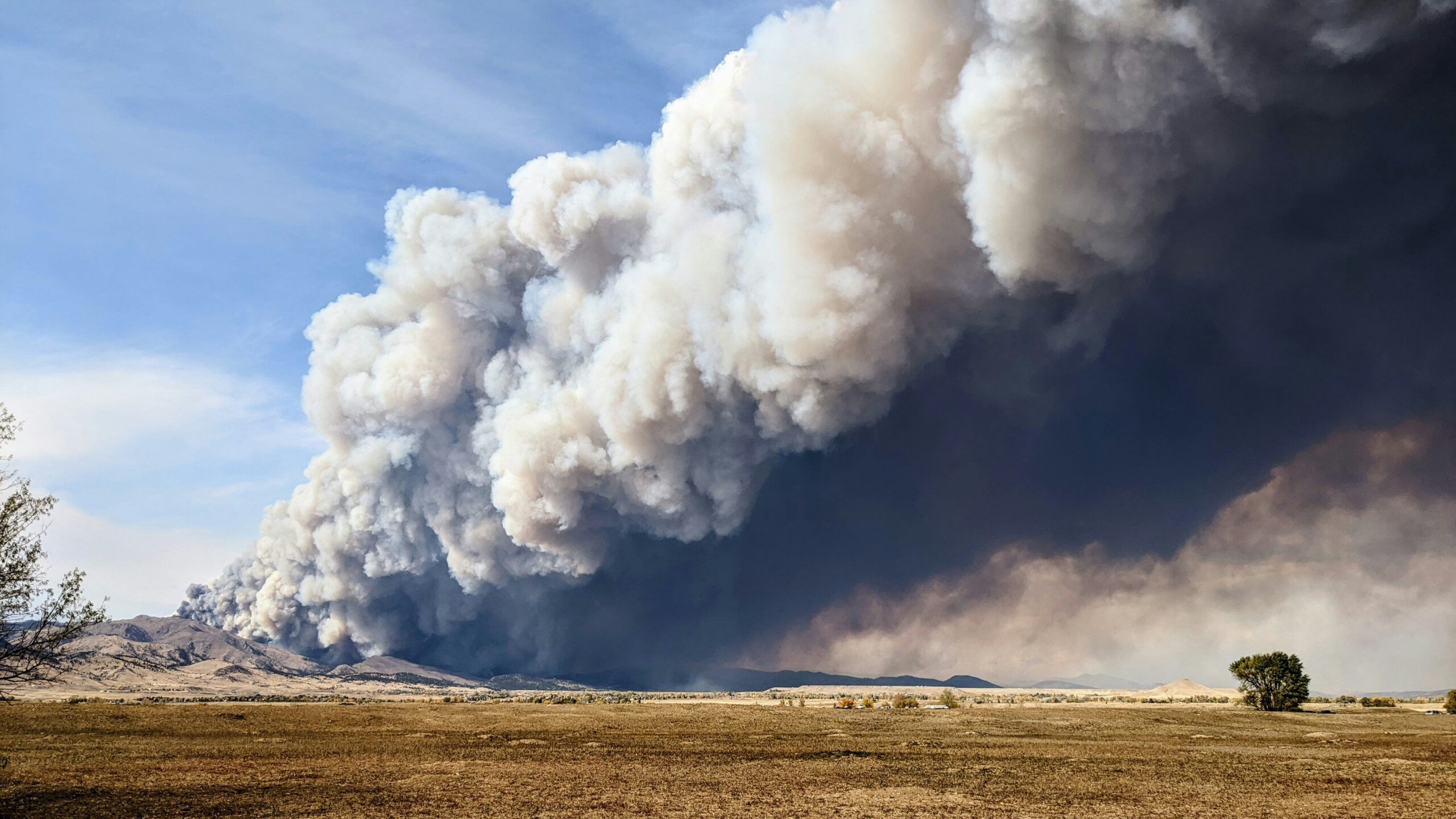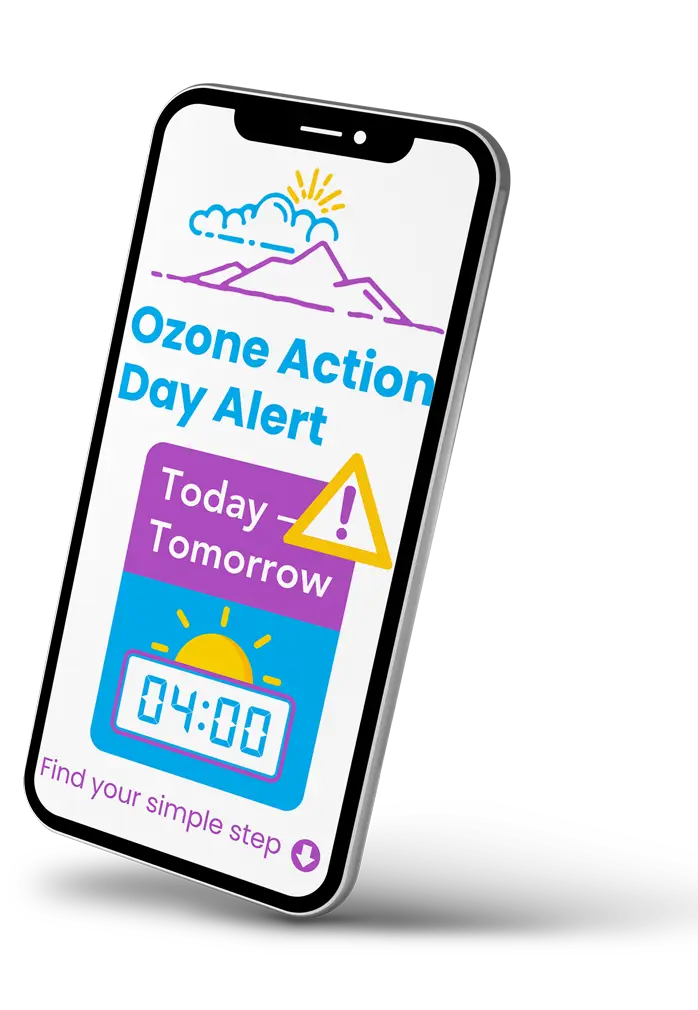While ground-level ozone is our most pressing summer air quality issue, it is not our only one here in the Colorado Front Range.
In the warmer months, we also deal with wildfire smoke from within the state or transported by the wind from neighboring states or countries. Wildfire smoke can also affect the formation of ozone.
Want to learn more, and what to do in the summer when they overlap? Read on.
The basics of wildfire smoke and ozone
Ground-level ozone is a harmful air pollutant that is invisible and odorless – meaning you can’t see or smell it. In the Front Range, our hot and sunny summer days provide the perfect conditions for ozone pollution to form from the regional emissions we produce, and build up to unhealthy levels. It’s a concern from June through early September each year.
Wildfire smoke is also a type of air pollution, that is often visible and that comes with a recognizable smell. However, relying on sight and smell to detect smoke can be deceiving, as smoke from wildfires as far away as California or Canada may not carry its smell when it arrives in Colorado – but it can still carry harmful particulate matter.
Particulate matter – also referred to as particulate pollution, fine or coarse particles, and PM2.5 or PM10 – is a main component of the air pollution that wildfires produce, and is its main public health threat. The “PM” in PM2.5 means “particulate matter,” while the number indicates the size of the particles – either 2.5 or 10 microns (µm). While both PM2.5 and PM10 are harmful to breathe, there are higher health risks associated with breathing in PM2.5; as due to its smaller size, it can penetrate deeper into the lungs and cause more damage to one’s respiratory health.
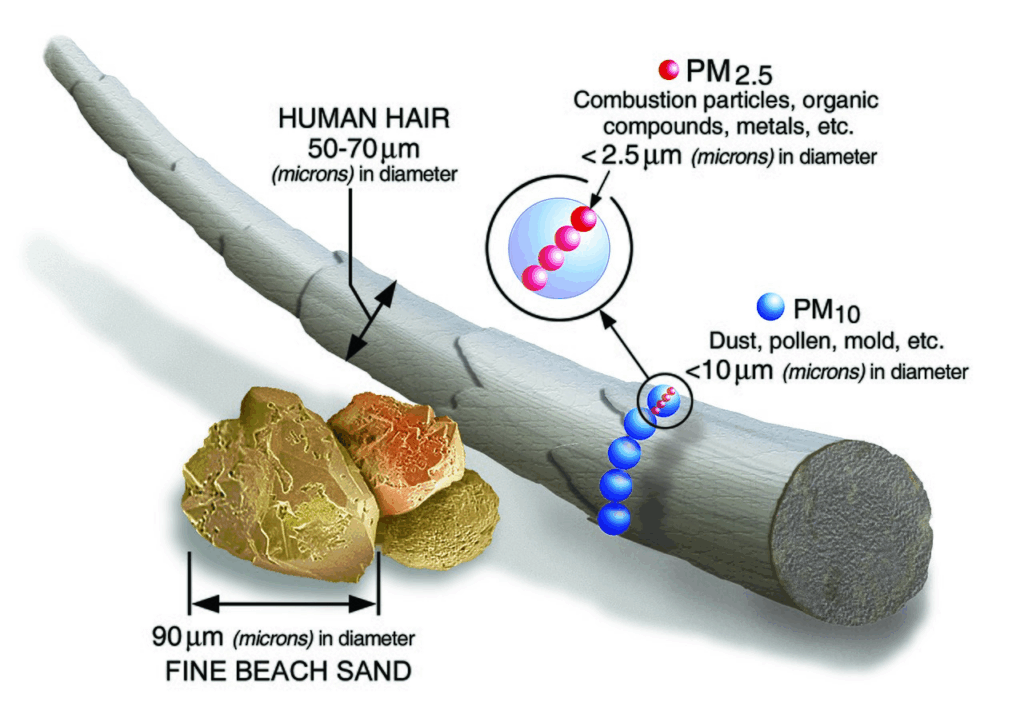
Wildfire smoke has similar negative health impacts to ground-level ozone, but it may be more noticeable in the moment – often causing eye irritation, nasal inflammation, and a scratchy throat. Particle pollution and ozone both irritate your lungs, and exposure to higher concentrations can cause acute throat irritation, coughing, and difficulty breathing. Over time, wildfire smoke and ozone can both cause reduced lung function and are associated with increased risk of cardiovascular disease.
Wildfires burn at extremely high temperatures, which makes their ash more toxic than other pollution, like car exhaust. And if wildfire smoke is from a fire that has burned through not just trees, but homes, cars, and other human-made materials, additional toxic or harmful particles or chemicals may also be in that smoke.
Wildfire smoke and higher ozone levels combined should both be taken seriously by everyone, even healthy individuals. However, when they occur at the same time, extra precautions are recommended to reduce air pollution exposure for children, the elderly, those with respiratory conditions such as asthma, outdoor workers, and outdoor athletes.
Resources and air quality alerts in Colorado
While the Regional Air Quality Council and Simple Steps. Better Air. send text and email alerts for summer ozone levels, we do not send separate alerts for wildfire smoke. However, our alerts will reference wildfire smoke in the summer when they are impacting ozone levels.
Sign up for ozone alerts here.
To learn more specifically about wildfire smoke, to receive wildfire smoke alerts, or see the status of wildfires nearby or far away, check out some of the great resources below!
The Colorado Department of Public Health and Environment (CDPHE)
CDPHE reports on air quality to the public every hour of the day using air quality measurements from continuous (real time) monitors at stations located around the state.
- View the current air quality conditions and forecast for the Denver metro here and for the whole state here.
- Sign up for air quality alerts from CDPHE here, including for wildfire smoke.
- To stay current on Colorado wildfire activity, prescribed burning operations, and smoke from out-of-state sources, visit the Colorado Smoke Blog.
Environmental Protection Agency (EPA) AirNow
The EPA AirNow.gov website reports air quality using the official U.S. Air Quality Index (AQI), a color-coded index designed to communicate whether air quality is healthy or unhealthy for you. When the AQI is over 100, it’s important to take air quality seriously.
The U.S. Environmental Protection Agency has also updated the AirNow mobile app to allow users to receive optional push notifications of their local Air Quality Index forecasts for the next day. Download the app at these links: Apple App Store | Google Play Store
The AirNow fire and smoke map is more specific to wildfires and smoke, at fire.airnow.gov.

Watch Duty
Watch Duty, a 501(c)(3) nonprofit, alerts you of nearby wildfires and firefighting efforts in real-time through its website and app.
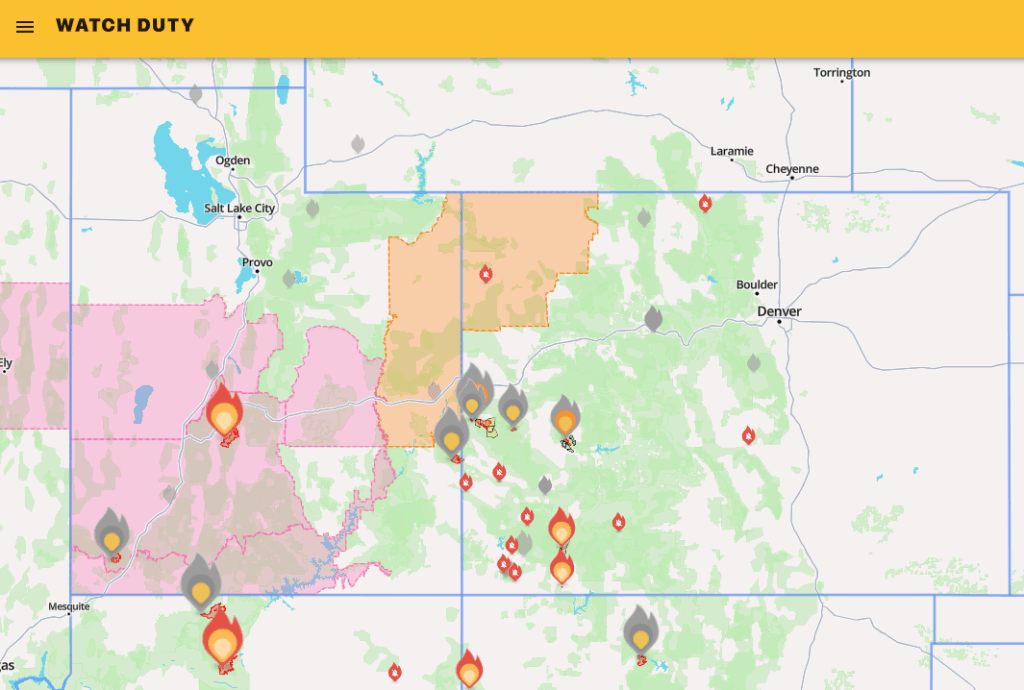
Protect your health
Concerned about the impacts of ozone pollution and wildfire smoke on your health?
On days with higher levels of both – when the AQI is usually over 100 – Front Range residents should reduce prolonged or heavy exertion outside, such as lengthy or intense exercise. This is especially important for people with heart or lung disease, older adults, and children.
Want to get outside? To reduce ozone exposure, plan your outdoor activities or exercise for before noon or after 8 p.m., when ozone pollution levels will be lower. However, smoke can often be worse in the morning or change throughout the day, so it’s important to check the air quality before you are active outdoors!
If wildfire smoke is very high – such as an AQI of 150 – it’s really important to reduce your exposure and exertion. You may need to reschedule outdoor work tasks and activities to a time when air quality improves.
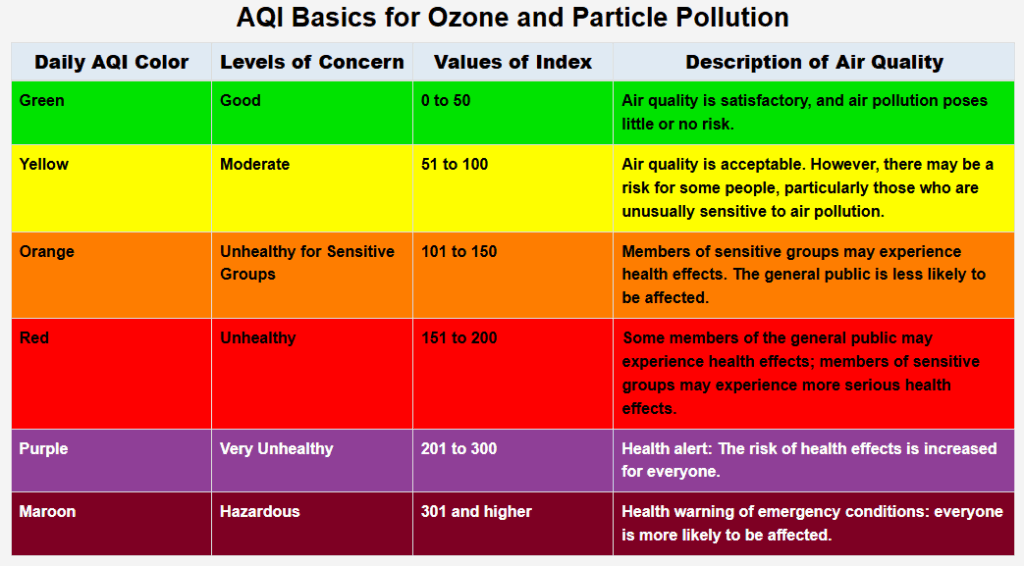
If you must be outside on a day with high levels of wildfire smoke, wearing a KN95, KN94, or N95 respirator is a great way to reduce your exposure and protect your health. While they do not filter out ozone, high-quality, well-fitting masks and respirators — such as KN95s, KN94s, and N95s — can filter out particle pollution from wildfire smoke both indoors and outside.
These individual air purifiers are highly effective, and can also help with allergies and prevent the transmission of infectious disease, since they work by trapping tiny floating particles like smoke, soot, pollen, and saliva in their electrostatic fibers. Please note that loose-fitting surgical masks and cloth masks do not adequately filter out or protect you or others from smoke, airborne pollution or infectious particles.
While inside, reduce smoke and improve your indoor air quality by adding to or improving air filtration. It can be as easy as upgrading your home’s furnace filter, or by purchasing or building an affordable standalone air purifier(s). Learn more about improving indoor air quality at our blog.
Additional sources:
- Yale Medicine, “How Bad Is Wildfire Smoke for Your Health?” https://www.yalemedicine.org/news/how-bad-is-wildfire-smoke-for-your-health
- Washington Post: “I’m a pulmonologist. This is how I protect myself from wildfire smoke.” https://www.washingtonpost.com/wellness/2025/07/15/how-lung-expert-protects-wildfire-smoke/

Kelsey Simpkins
Communications and Programs Manager
Regional Air Quality Council

